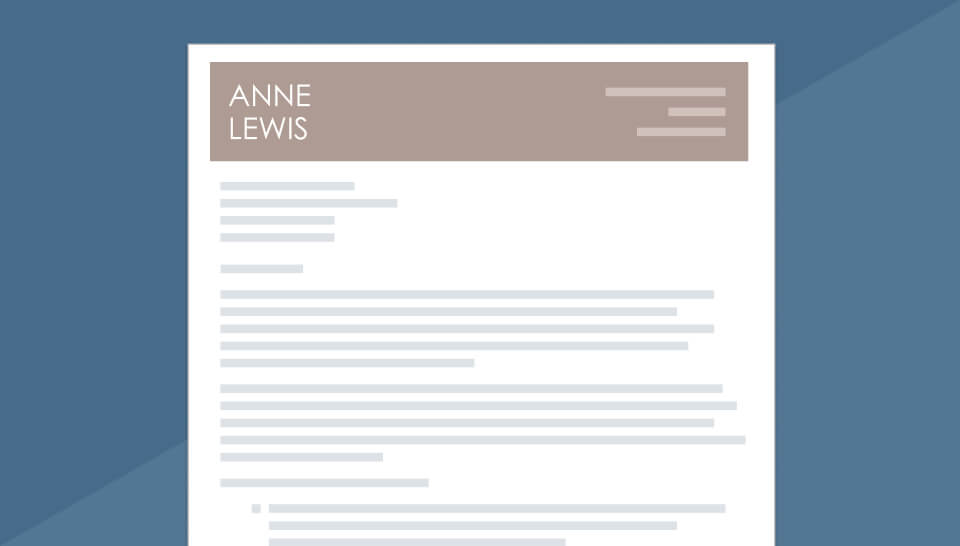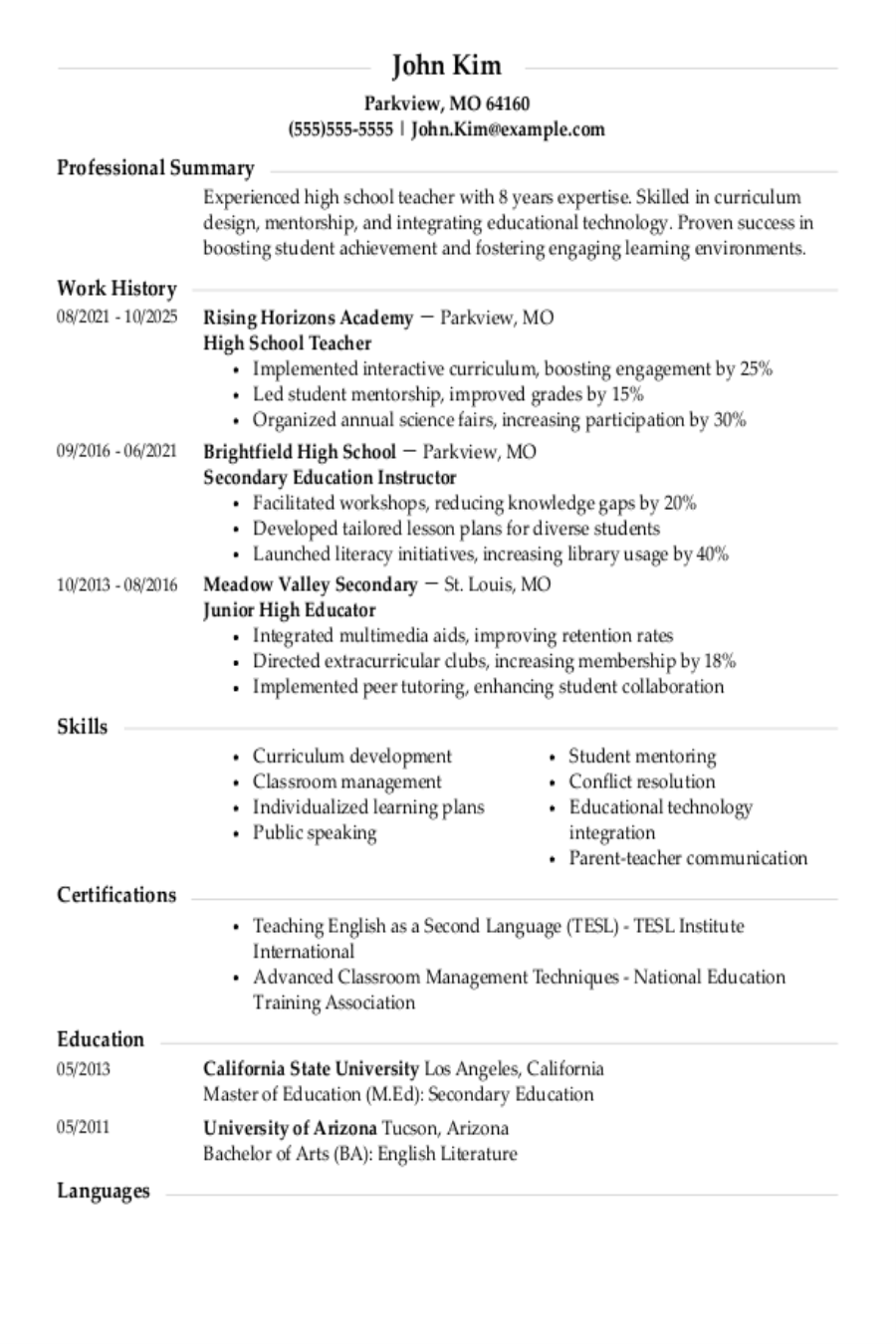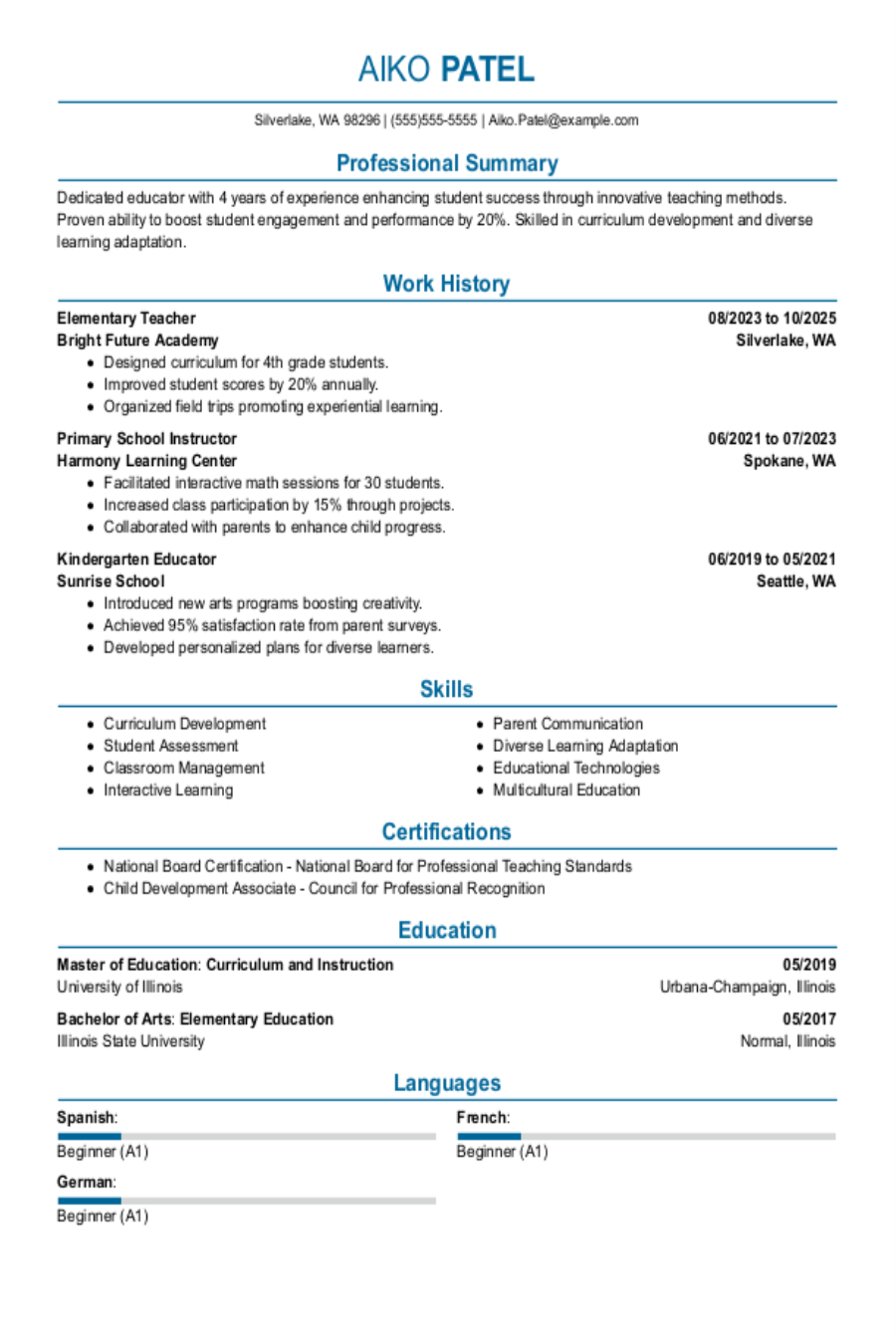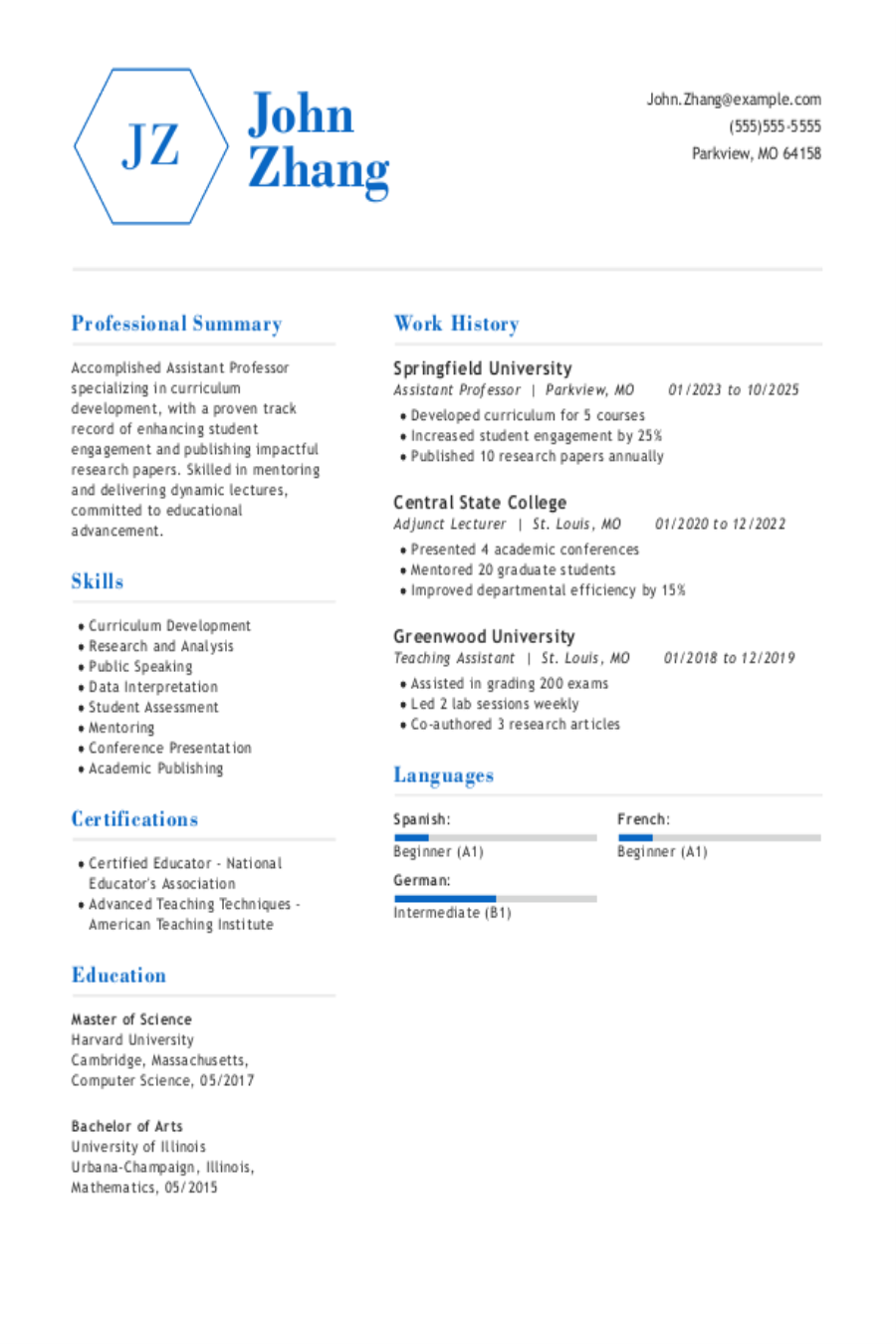Writing a resume means making the right decisions. Whether it's style, formatting, or content, resume examples can help you understand whether you're making good choices that will move your career forward. Checking out examples of good vs bad resumes can help you understand the most common resume mistakes and the best strategies for impressing employers and landing the interview.
In this article, we'll cover:
- Three bad resume examples with notes on how they can be improved
- A good resume example that fixes those resume mistakes
- Tips for improving your resume
Want to skip the bad examples and create a great resume right now? Try our AI Resume Builder. This tool offers ATS-friendly resume templates and AI-powered writing assistance to help you make an impressive resume in minutes.
3 Bad Resume Examples and What They Do Wrong
Before we get into what makes a "bad" resume, it's important to understand what the purpose of a resume is. A resume needs to do three things:
- Grab attention: Hiring managers and recruiters sometimes wade through hundreds of resumes for a single role. Yours needs to stand out from the crowd and ensure the employer spends time reading and absorbing your resume's content.
- Describe your qualifications: Your resume outlines your credentials, describes your key professional skills, and gives the employer a sense of your experience and how it contributes to your ability to achieve results.
- Pass through applicant tracking systems (ATS): Most companies use AI-based software to screen candidate resumes for keywords that show an applicant fits the role's requirements. If your resume isn't formatted to pass through ATS, or if your content isn't specific and targeted to the role, it may be filtered out automatically.
Bad resume example #1:
What makes this a bad resume?
- Inconsistent format: This resume uses a simple template that is easy to follow, but its format is inconsistent in its use of spacing, number of columns, and whitespace. This lack of consistency is a recipe for disaster when it comes to ATS screening.
- Font: This candidate uses a resume font that looks unprofessional for this context. What's more, some sections use a larger font size that makes the whole page look unpolished.
- Spelling mistakes: Spelling errors make this resume seem rushed and unprofessional. Using spellcheck and running your resume by a friend will help catch these mistakes before you submit it.
- Generic content: This resume's worst mistake is its content. It's vague, overly casual, and doesn't provide the employer with any specific skills or achievements to highlight what the candidate brings to the table.
- References: A "references available upon request" section is no longer a standard section for a resume. Plus, the phrasing of this section is abrupt and rude.
- Inappropriate email address: A strong resume is all about the details. A professional email address uses some variation of your full name or initials. For this candidate, "sarahjohnson@example.com" or "sjohnson@example.com" would work better.
What this resume does right:
- Length: This bad resume example doesn't have a lot of positives, other than it is concise. An ideal resume for a candidate with this level of experience should be one page long. This resume would benefit from a lot more detail, but this candidate's succinctness is a virtue.
Not sure if your resume is ATS-friendly? Resume Now's templates are perfect for passing through ATS, and our AI Resume Builder will help you identify the right keywords to use. Already have a resume? Use our ATS Resume Checker to read through your resume and get a score that represents your resume's ATS performance.
Bad resume example #2:
What makes this a bad resume?
- Inappropriate content: This resume looks better than the last one, thanks to its professional resume template. Its content is longer and more detailed, too. Where it fails is in its content, which is full of filler and focuses too heavily on details that don't matter.
- Lack of achievements: This resume doesn't include any specific achievements or details related to the candidate's role. Instead, it emphasizes vague responsibilities. Including some work challenges, outcomes, and numerical data would go a long way toward improving this resume.
What this resume does right:
- Template: Using the right resume template goes a long way. In fact, this neat template and its consistent formatting make this resume look professional. While its content isn't effective, at a glance, it looks interesting and visually appealing—making other resume mistakes easier to ignore.
- Soft skills: While this candidate doesn't focus on what sets them apart, including soft skills like scheduling and organization alongside their more technical skills is a great call.
Which specific resume mistake leads to content that misses the mark? A bad resume focuses on conveying general responsibilities and tasks from previous roles instead of being detailed. To make a good resume, use active language and describe specific achievements and outcomes from your job. For example, rather than write "Responsible for reaching sales quota," add your numbers and write, "Sold $5k or more each month, successfully achieving the minimum monthly sales quota."
Bad resume example #3:
What makes this a bad resume?
- Picture: Including a picture of yourself on your resume is almost always a bad idea for jobs in the U.S. If you're a model or an actor, a headshot might be necessary, but for almost any other role, it's an inappropriate choice. On top of that, this candidate's profile picture is inappropriate for a professional setting. If you have to include a photo, use a professional headshot in business-appropriate attire.
- No metrics: While we're getting a lot closer to a great resume that's ready to submit, it still misses the mark. The experience section is more specific and targeted than the previous two resumes, but the distinct lack of measurable outcomes makes it hard for the reader to pinpoint the candidate's concrete impact.
- Missing additional sections: Now that we're getting closer to a strong resume, it's time to think about what could be added to this resume to make it more effective. With just two experience section entries, an additional section outlining some professional certifications, volunteer experience, or language proficiency would take this resume to the next level.
What this resume does right:
- Professional template: While including a profile picture isn't the right move for this resume, the template is professional and easy to read.
- Active language: Using action-oriented verbs makes this candidate's experience feel impactful and energetic.
- Balanced skills section: This resume's skills section includes a balanced blend of hard and soft skills that showcase both the candidate's personal skills and technical knowledge and abilities.
Good Resume Example
Now that we've seen some bad examples—some worse than others—it's time to examine an effective and attention-grabbing resume.
What makes this a great resume:
- Every part in its place: This resume includes each of the typical parts of a resume, all of which are organized appropriately and formatted consistently.
- Style: This resume uses a neat template that guides the reader through the candidate's career story.
- Keywords: While we can only guess what the job description looked like for this candidate, it's not too hard. This candidate's resume is full of both soft skills and specific, technical skills related to the digital marketing industry.
- Portfolio link: Including a portfolio link is a smart, strategic move for a marketing professional.
- Language skills: Listing language proficiency is a fantastic way to show off your communication skills and cultural awareness.
- Numerical data: Including real-world figures backs up this candidate's experience and demonstrates their impact in previous roles, showcasing what they bring to the table.
Tips for Improving Your Resume
For some of our bad resume examples, it's easy to see what the problem is. But if you notice some mistakes that match your own resume, then it's time to rework your resume. Try the following tips for improving your resume:
Tip #1
Rethink your formatting
Most resumes use the chronological resume format, which organizes your career story by listing your experience in reverse-chronological order. This is great for experienced candidates, but if you're an entry-level candidate or a career changer, you might benefit from a resume format that's structured differently.
The functional format focuses on skills and is perfect for beginners. For a more balanced approach, try the combination resume format, which balances both experience and skills.
Tip #2
Don't be afraid to branch out
Covering the basic resume sections is crucial, but it shouldn't limit you. Use optional resume sections as needed to describe your strong points. From hobbies and interests to personal projects, you can include anything on your resume that is professional, appropriate, and relevant to the role.
Tip #3
Make it targeted
We've talked a lot about ATS-friendliness in this article, but it really is that important. Improve your resume's ATS performance by reading the job description closely and identifying relevant resume keywords to show the employer that you're exactly who they're looking for.
Tip #4
Pick the right template
From simple to modern to creative templates, there's a wealth of neat and stylish resume templates for every industry. A premade template is ATS-friendly and ready to use within minutes. Choose one that organizes your information well and matches your personal brand.
Key Takeaways
Understand your resume's purpose
A great resume doesn't just list your work history—it needs to grab attention, highlight your qualifications, and pass ATS screening.
Make strategic style choices
A bad resume is a resume that doesn't make the candidate's strengths stand out. Help your resume land at the top of the pile by choosing a template that's organized and polished and picking a resume format that places the focus on your strongest qualifications.
Refine your resume by honing in on the details
Typos, inappropriate font choices, and unprofessional email addresses make the entire resume read as sloppy and inappropriate. Fixing common mistakes like these will make all the difference in creating a polished resume.
Focus on achievements, not just duties
Avoid generic descriptions of responsibilities. Instead, emphasize your accomplishments and how you added value in previous roles.
Include measurable data
Whenever possible, use numbers and metrics to prove your impact. Specific data points will show employers what you bring to the table.
FAQ
Last Updated: July 09, 2025
A bad resume isn't defined by a single mistake, but a combination of decisions that make your document feel unprofessional or forgettable.
Inconsistent formatting, vague details, spelling errors, listing responsibilities rather than achievements, and an ATS-incompatible template are all common mistakes that contribute to your resume getting overlooked by recruiters.
No. Adding "references available upon request" is a common resume mistake. Every line on a resume takes up valuable space. Employers already expect you to be able to provide references if needed, so indicating that you're willing to do so doesn't add to your employability.
One of the most common mistakes is listing only job responsibilities—essentially a "laundry list" of tasks—without showing impact.
Starting an experience entry with "responsible for" is always a bad sign. Instead, use active language and numerical data to show the employer what you can do.
Many applicant tracking systems (ATS) can't parse complex or unusual formats. If the ATS reads your resume incorrectly, it may be filtered out of the running for the role, even if your content is on point.
Avoid using multiple columns unless you're using an ATS-friendly premade template. In fact, if you're creating your template from scratch, you're better off avoiding any unique or flashy elements. Keep it simple and readable.
Yes! Small details like this can make a big difference. An unspecific file name like "Resume.docx" will make it harder for hiring managers to keep track of your document, while a name like "Cool-Resume-Final(2).pdf" gives a sloppy and unprofessional impression.
For a professional file name, use a combination of your name, the role you're applying for, and the document type, such as "Jane-Delpueblo-Nurse-Practioner-Resume.pdf."
Was this information helpful? Let us know!
Hailey is a career advice writer dedicated to helping job seekers excel in their careers.
More resources

The Respect Deficit: 9 in 10 Older Workers Report Facing Ageism in the Workplace
Resume Now s latest report uncovers widespread disrespect and ...
![People Skills for Your Resume [Synonyms and 20+ Examples] People Skills for Your Resume [Synonyms and 20+ Examples]](/sapp/uploads/2024/04/people-skills-for-your-resume.png)
People Skills for Your Resume [Synonyms and 20+ Examples]
Trying to think of the right word for people skills ? Loo...

How to Write a Cover Letter in 2025
A great cover letter will impress employers and get you hired....

High School Teacher Resume for 2025: Examples and Guide
Get inspired with our high school teacher professional resume ...

Elementary Teacher Resume: Examples, Templates & Tips for 2025
Was this information helpful? Let us know &star &star &star &s...

Assistant Professor Resume: Examples, Templates & Tips for 2025
Looking for a job as an assistant professor? Check out our tai...
